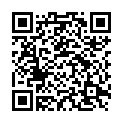|
|
|
| Module code: E2408 |
|
|
3V+1U+1PA (5 hours per week) |
|
6 |
| Semester: 4 |
| Mandatory course: yes |
Language of instruction:
German |
Assessment:
Term paper (50%), seminar presentation (50%)
[updated 08.01.2020]
|
E2408 (P211-0069, P211-0210) Electrical Engineering and Information Technology, Bachelor, ASPO 01.10.2018
, semester 4, mandatory course, technical
|
75 class hours (= 56.25 clock hours) over a 15-week period.
The total student study time is 180 hours (equivalent to 6 ECTS credits).
There are therefore 123.75 hours available for class preparation and follow-up work and exam preparation.
|
Recommended prerequisites (modules):
E2205 Design in Electrical Engineering
E2302 Measurement and Instrumentation Engineering 2
E2303 Electronics 1
[updated 05.02.2021]
|
Recommended as prerequisite for:
E2610 Integration-Compatible Circuitry
[updated 07.02.2021]
|
Module coordinator:
Prof. Dr. Albrecht Kunz |
Lecturer:
Prof. Dr. Albrecht Kunz
Dipl.-Ing. Thomas Bertel
[updated 05.02.2021]
|
Learning outcomes:
After successfully completing this course, students will become familiar with the many possibilities of circuit simulation at the component level by using an integrated design environment for circuit analysis and design. They will also make use of the modification options offered by the simulation tool to adapt it to their own special requirements. Students will be able to independently design electronic circuits in the low frequency range and test them in simulations. Within the framework of the tutorial and the project, students will plan various electronic circuits on a printed circuit board in small groups. They will use EDA software to create the necessary layout. To do so, they will apply their knowledge about enclosure and assembly technology, connection technology and layout rules in order to obtain a production-ready, functional design. Students will hold a presentation in which they will present the results of their group work in a well-structured, comprehensible and appealing way. They will write a term paper in the style of a technical report. In it they will document the process from the design of the circuit, to simulation tests and the final version of the circuit board in a clear and concise manner.
[updated 08.01.2020]
|
Module content:
- General information on system and circuit design, specification sheet, specifications, design levels and forms of representation, bottom-up method, top-down method, Designing microelectronic systems - Introduction to the integrated design environment of the simulation tool being used, schematic editor, graphical result display, stimulus editor, parameter extractor, file types, net list, analysis types, simulator instructions, simulator settings, - Analog and digital network elements, models, sub-circuits, analog and digital behavior description, macro modeling, - Simulation of mixed digital analog circuits, interfaces between analog and digital circuit parts - Exercises for handling the simulation tool used in the course The structure of microelectronic systems - Connection technology, enclosure and assembly technology, hybrid circuits, printed circuit boards in SMT - SMT component and enclosure forms, types of packaging and delivery, solderability and storage, - Printed circuit board production, laminate materials, prepregs, presses - Chip on Board (COB), chip assembly, die bonding, eutectic alloys, bonding, Tape Automated Bonding (TAB), wire bonding, bond defects, ultra-fine wires, gap welding, - Creating circuit diagrams, symbols in the EDA software being used, properties of components and connections in the circuit diagram, important parameters of electronic standard components, circuit function and testability, test points, - Layout design, PCB layout (single-sided, double-sided, multilayer), component positioning, circuit routing, spacing and minimum dimensions, EMC aspects, - Creating schematic symbols and PCB components, data sheet research, tolerances, minimum dimensions - Manufacturing aspects, post-processing, reflow and wave soldering, solder pastes, properties, fluxes, activator, solder quality, storage, soldering process, adhesive bonding, panel size and separation, assembly methods, testing and inspection - Implementing a small project
[updated 08.01.2020]
|
Recommended or required reading:
Beuth, Klaus: Elektronik: Band 2: Bauelemente, Vogel, (latest edition) Heinemann, Robert: PSPICE, Hanser, (latest edition) Huschka, Manfred: Einführung in die Multilayer-Preßtechnik, Leuze, 1988, ISBN 3-87480-038-5 Krups, Robert: SMT-Handbuch, Vogel, 1991 Leibner, Peter: Rechnergestützter Schaltungsentwurf, Krehl, Münster, 1996, 1. Aufl. Nolde, Ralf: SMD-Technik, Franzis, 1994 Paul, Reinhold: Einführung in die Mikroelektronik, Hüthig, 1985 Reichl, Herbert: Hybridintegration, Hüthig Strauss, Rudolf: SMD Oberflächenmontierte Bauteile, VTT, 1989 Tietze, Ulrich; Schenk, Christoph: Halbleiterschaltungstechnik, Springer, (latest edition)
[updated 08.01.2020]
|


